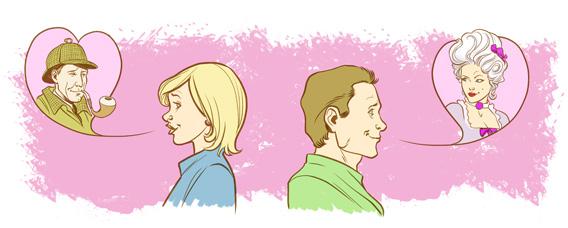And who are the most attractive male characters in literature? Ask Rachel Syme.
Characters in literature are the antithesis of today’s pornography culture. A female character in a novel is never seen in the flesh and, except in the bitchiest roman à clef, her creation degraded no one. Instead, she exists only on the page, where the reader can access what remains the most private part of any human: her mind. For that reason, a woman in fiction is still the ultimate thinking man’s—or woman’s—pin-up.
Take Alejandra in Cormac McCarthy’s novel All the Pretty Horses. The daughter of a Mexican gentleman-rancher, she bewitches aspirant cowboy John Grady Cole. Alejandra, with “the nape of her neck pale as porcelain,” is beautiful, but what compels Cole—and readers—is her carefully modulated inaccessibility. She and Cole sleep together, before she honors her promise to her family to break off the affair. Alejandra therefore sits at the exact interstice of prohibition and possibility.
The second category of literary siren is a function of what David Foster Wallace’s former editor Michael Pietsch referred to as “the physics of reading.” A character met in a book will never have to be actually lived with. Hence literature is the perfect habitat for the enchanting-cum-infuriating seductress. First in this category is Pamela Flitton in Anthony Powell’s A Dance to the Music of Time. In 1940s London she behaves appallingly to the Allied officers who are infatuated with her; we see her “surveying the street with her usual look of hatred and despair.” Later Pamela throws her novelist lover’s manuscript into a canal. Other such temptresses include Becky Sharp from William Thackeray’s Vanity Fair and Manon Lescaut in Abbé Prévost’s eponymous 18th century French novel.
A strand of criticism maintains that Ernest Hemingway could not draw plausible women, but for some readers the occasionally androgynous Hemingway heroine remains the ideal literary fantasy object. “Damned good-looking” Brett Ashley in The Sun Also Rises narrowly defeats Catherine Barkley from A Farewell to Arms on the back of a single simile: Brett, Hemingway writes, is “built with curves like the hull of a racing yacht.” Another interwar candidate demands inclusion, of course: Daisy Buchanan from Fitzgerald’s The Great Gatsby, with her “voice full of money.”
If literature can paint a woman in exacting detail, it can also conjure appeal in the opposite fashion, by saying very little. Byron’s poem “She Walks in Beauty” stretches to a mere 18 lines, and never names the She who “walks in beauty, like the night/Of cloudless climes and starry skies.” She is, though, so attractive precisely because she is little known—a woman painted so economically is a screen on which readers can project their own private desires.
The classical world also provides a number of potential candidates, notably steadfast Penelope from the Odyssey. However, clichéd as it is, and although she spends much of the Iliad moaning, Helen of Troy wins inclusion here on the grounds that hers is still the face that launched a thousand ships.
Now sex. The spiritual home of the “hottest women” list is the kind of publication known in my home country of Britain as a lad’s mag. To ape their vernacular, one could include O, from Anna Desclos’ erotic novel The Story of O, on the simple grounds that she would let you do absolutely anything to her. On a more tasteful level, O wins inclusion because her fusion of polished fashion photographer and bondage slave is a riff on that timeless male obsession; the Madonna/whore dichotomy.
Finally, in Mikhail Bulgakov’s The Master and Margarita, Margarita exhibits unflappable enthusiasm for her boyfriend’s unpublished writing and also raises no objections to his preference for sitting at home trying to write a novel in lieu of getting a proper job. She seems perfectly calculated to appeal not only to those who read fiction but also to those poor sods who aspire to write it themselves.
—
See all the pieces in this month’s Slate Book Review.
Sign up for the Slate Book Review monthly newsletter.
